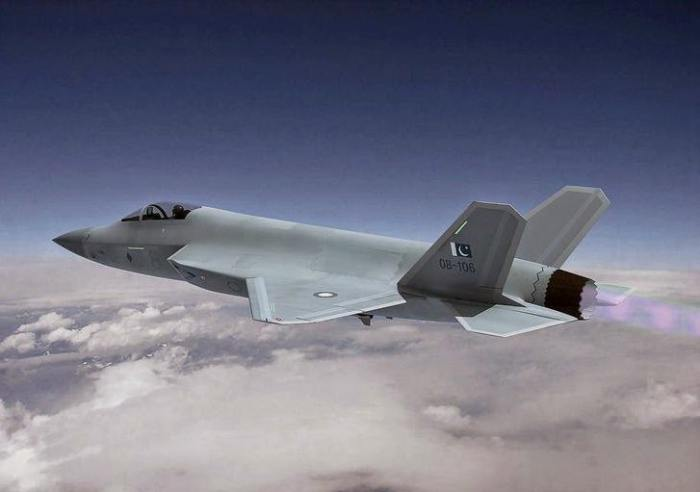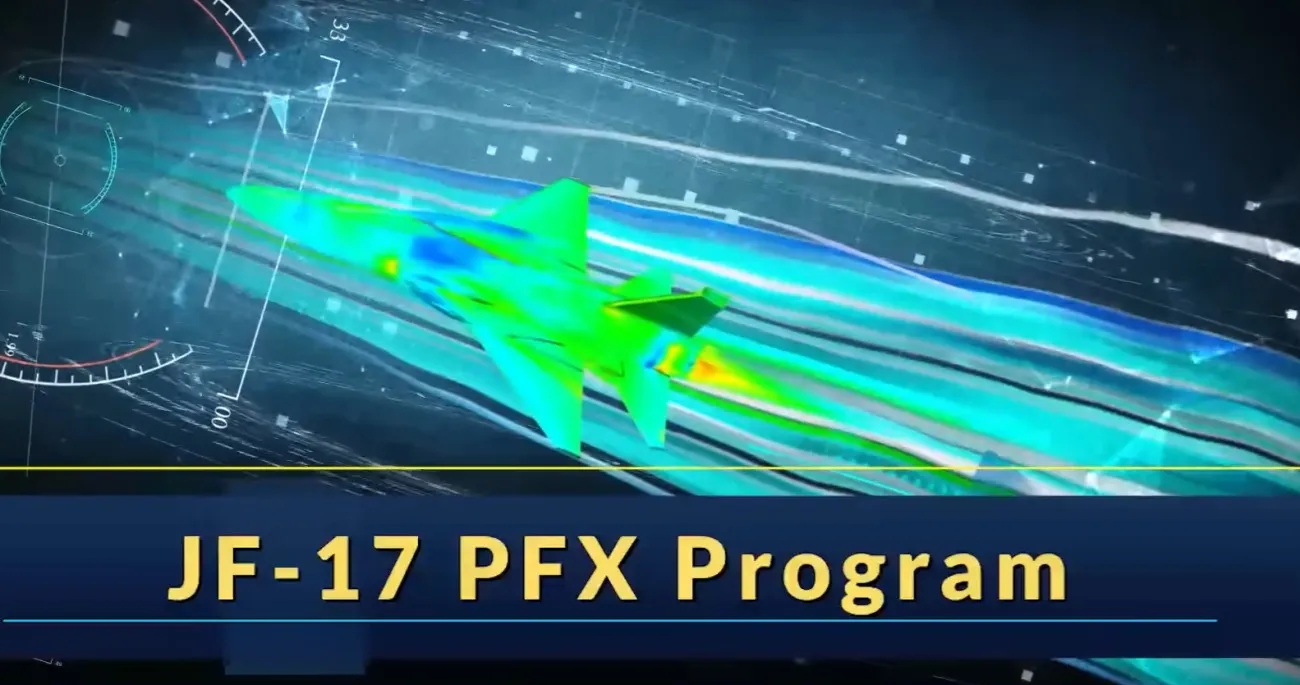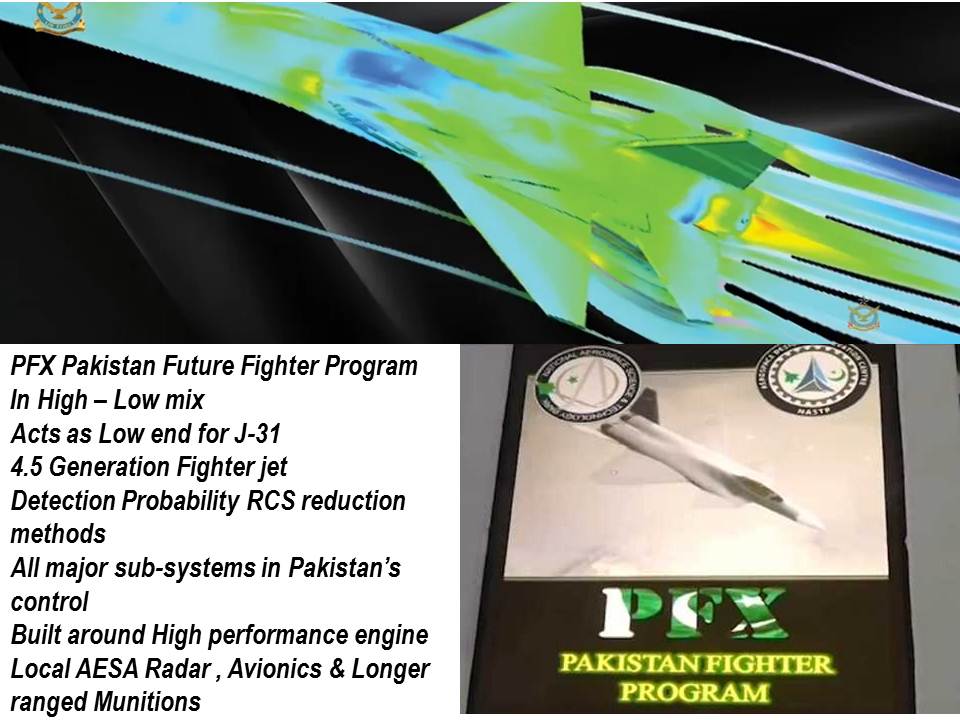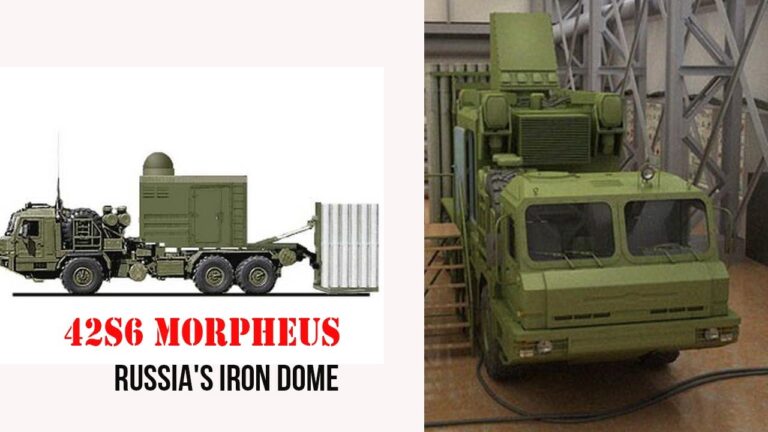
JF-17 PFX
Pakistan Aeronautical Complex (PAC) shared its plans for a new twin-engine fighter version of the JF-17, named the JF-17 PFX. This fourth-generation fighter aims to boost Pakistan’s defense while still relying on Chinese assistance.
Set for service in the 2030s, the PFX is expected to offer better performance, larger payloads, and modern technology to handle today’s combat needs.

What Makes the JF-17 PFX Different?
Better Features than the JF-17 Block III
The JF-17 PFX, unlike the earlier model, features two engines that allow for longer range, larger payloads, and improved altitude capabilities. These improvements aim to provide
Better Radar: Can support a bigger radar for improved detection.
- Advanced Weapons: Includes PL-10 and PL-15 missiles for better air-to-air engagements.
- Enhanced Flight Performance: It offers improved maneuverability, higher operational ceilings, and the ability to supercruise.
- The design also incorporates lessons from the JF-17 Block III by utilizing advanced materials, AESA radars, and helmet-mounted displays.
The Strategic Role of the JF-17 PFX
Bridge to Fifth-Generation Technology
Delays in Pakistan’s fifth-generation project AZM have made the JF-17 PFX an important step. By enhancing local manufacturing through this project, PAC aims to set the stage for future collaboration with China on advanced fifth-generation aircraft.
However, China provides 95% of the technology for the JF-17 Block III. This indicates a strong reliance on Beijing for key technologies, especially in engines and weapon systems.
Keeping up with Regional Military Developments
Pakistan’s push for the JF-17 PFX shows a desire to match or exceed the airpower of nearby countries. With India enhancing its Su-30MKIs and Iran acquiring Su-35s, Pakistan’s focus on affordable yet effective fighters is key to preserving balance in the region.
Challenges in Creating the JF-17 PFX
Costs and Resources
The twin-engine setup increases both production and operational expenses. It remains uncertain whether Pakistan can afford to acquire other models like the J-10C and potentially the FC-31 while developing the PFX.
Industrial Constraints
The domestic aerospace industry in Pakistan faces technological challenges. Without substantial Chinese support, meeting the high expectations for the PFX could be difficult.
Concerns About Fleet Composition
Introducing the PFX alongside the J-10C and future FC-31 fighters may create logistic and integration issues due to their differing sizes and capabilities.

Collaboration with China: Key to Success
China’s support is essential for realizing the JF-17 PFX. We expect advanced radar and missile technologies from China’s fifth-generation J-20 program to influence PFX’s development.
Furthermore, the J-10C and JF-17 share certain systems, thereby simplifying maintenance. The J-10C enhances the operational range and sensor capability, which complements the more economical JF-17 for strategic integration into Pakistan’s air force.
Impact on Pakistan’s Defense Landscape
Enhancing Air Defense
With a new fighter, Pakistan aims to strengthen its deterrent capabilities against threats from neighboring countries. The JF-17 PFX, equipped with advanced technology, will enhance its ability to perform both offensive and defensive missions.
Economic Considerations
The JF-17 PFX project might help Pakistan’s defense manufacturing sector grow, resulting in more local jobs and increased industry growth.

Future Goals
If it works out, the PFX program could help Pakistan start new aerospace projects, including achieving Project AZM.
Conclusion
The JF-17 PFX is an important move for Pakistan’s defense industry because it combines self-reliance with support from Chinese technology.
Although the program faces challenges, its successful execution could enhance Pakistan’s standing in global military aviation. The twin-engine version shows potential, not only as a strong fourth-generation fighter but also as a way to develop future capabilities.
By focusing on partnerships and strategic integration, Pakistan can use the PFX to gain an advantage in regional airpower.
References
- Pakistan Aeronautical Complex (PAC) reports and releases.
- Regional defense journals provide analysis.
- www.defensenewstoday.info—insights on the JF-17 and related platforms.
- Expert opinions and discussions from the Pakistan Defence Forum are also available.







